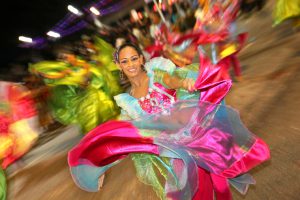SG Publications: ‘State carnivals and the subvention of multiculturalism in Singapore’ by Daniel P.S. Goh, The British Journal of Sociology
April 13, 2011
Daniel Goh (Sociology) looks at how Chingay and other state-sponsored parades have evolved in keeping with state’s needs of the period. Goh’s paper has ramifications for understanding past and future state-sponsored cultural events and soft power in Singapore and beyond.
There is an inevitable political dimension to state carnivals. For Singapore they have been deployed to connect two distant aspects of state affairs: one being state hegemony and the other being vernacular cultural practices. Carnivals are particularly significant as they have the potential to symbolically mobilize people.

In examining state carnivals from three historical periods, Goh shows how each carnival served the purpose of supporting multiculturalism at that particular point in time. First, in Singapore, the coronation of King George VI in 1937 consisted of a series of horizontally segmented carnivals organized around discrete racial categories corresponding to official classifications. This inculcated in the minds of people the idea of belonging to a racial group. Second, the Chingay parade in the 1970s served to purify the creole for the purposes of nation-building and the formation of national identity. Finally, from the 2000s onwards, events such as racial harmony day and the national day parade emphasize the ideas of hybridity and difference.
Each time period conveys a distinct definition and agenda of multiculturalism and the respective carnivals were organized accordingly to address these specific historical concerns.
British Journal of Sociology, 2011:62:1:111-133. BJS vol. 62:1 website. Copyright LSE. Download Offprint.
